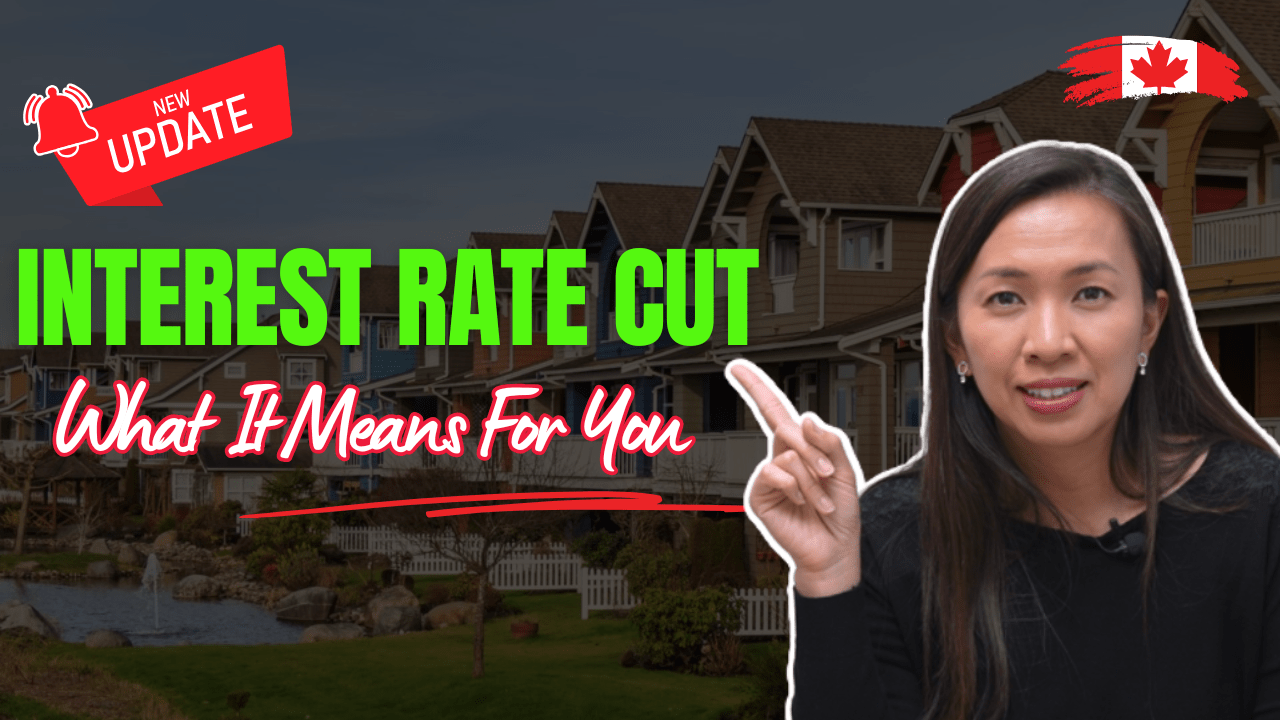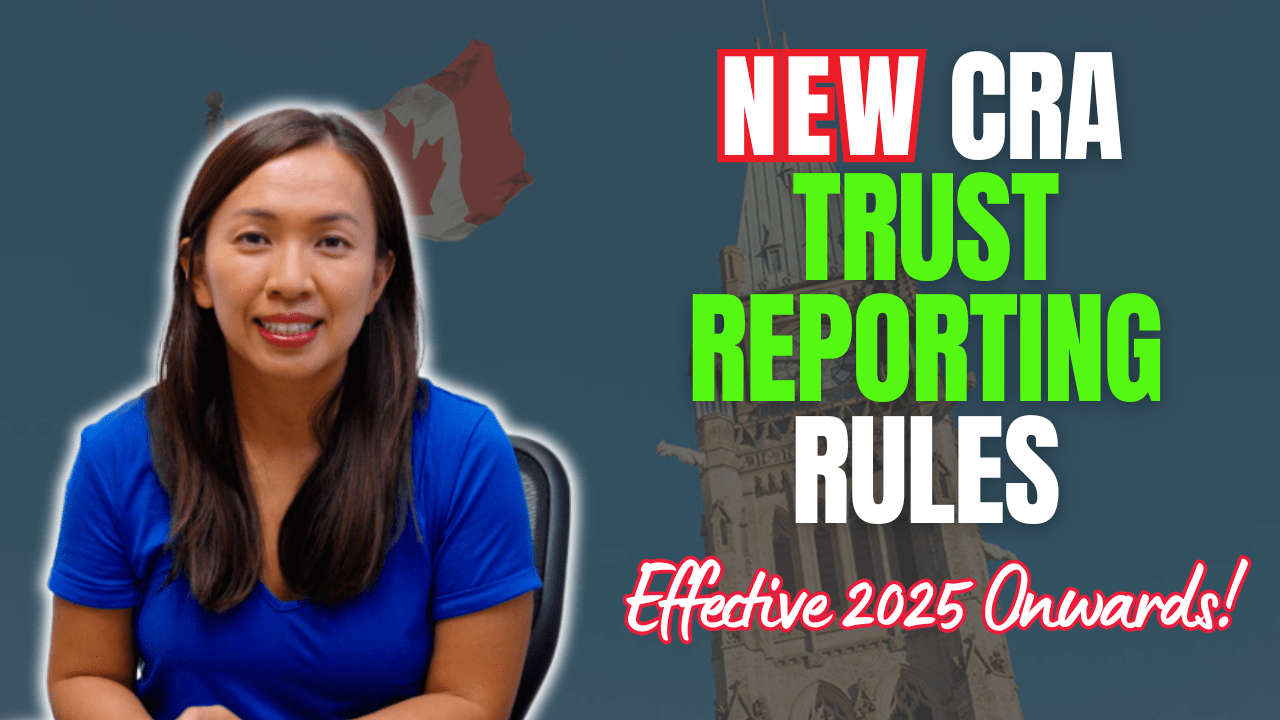The previous article discusses how to calculate rental property capital gains tax on sale of your rental property.
In this article, I discuss five ways that you can use to lower your capital gains tax when you sell your rental properties.
The Income Tax Act allows Canadian real estate investors to deduct expenses that are incurred to earn income.
Make sure you check my video where I talk about this in depth.
1. Maximize your tax deductions before triggering capital gains tax
To calculate capital gains on sale of rental property, we have to calculate the adjusted cost base from purchase and the net proceeds from sale. You can always refer to the previous post.
Capital gains = Net proceeds – Adjusted cost base of the property
To lower your tax, we need to lower the capital gain = $600,000
To lower the capital gain, we need to maximize the deductions.
This means that we need to minimize net proceeds and maximize the adjusted cost base of the property.
How to minimize net proceeds?
Net proceeds is calculated based on the following:
Net proceeds = Sale price – sales commission and HST – legal fees – mortgage penalty, if applicable – other costs to sale
If you sell your rental property with the help of a real estate agent, they typically charge realtor commission and HST. The expenses are tax deductible and this is often paid at the time of closing. Make sure you deduct the full sales commission.
Legal fees and other costs that you incurred to sell your property are also tax-deductible.
If you incur a mortgage penalty to sell, make sure you also pick it up at the closing document to deduct against the sale price.
How to maximize Adjusted Cost Base (ACB)?
ACB is calculated as the following:
ACB = Purchase price + legal fees + land transfer tax + other closing costs + capital improvements made over the years of ownership
ACB stands for adjusted cost base. Most people refer to it as the purchase price of the property.
The reality is that ACB includes not only the purchase price but also all the closing costs related to the purchase as well as the capital improvement you have made over the years of ownership.
Closing costs include the legal costs on purchasing the property, land transfer tax incurred on the purchase, as well as all other related costs that you incur to close the property. However, all closing costs are not payable by the buyer; a few are paid by the seller also.
For example, if you purchase a property through a wholesaler and you agree to pay the wholesaler a referral fee, this is also added to the ACB calculation.
Another example is the undeducted finance charges incurred when you purchased the property. Some people purchase their property with a requirement to purchase mortgage insurance. Mortgage insurance premiums are considered finance charges and you can deduct it over 5 years against your rental income. If you have never deducted it as a finance charge, the mortgage insurance premium you paid can be added to the ACB calculation.
ACB also includes the capital improvement that you have made over the years to your property. This can include the initial renovation you have done to get the house ready for rent shortly after you have purchased the property, this also includes the expenses that you have incurred to get the house ready for sale. Additionally, capital improvements represent expenses that you have incurred to improve your property. To name a few, renovation to convert the basement to a legal secondary suite, windows, roof, flooring, replacing the entire kitchen.
This means that you need to keep your receipts, closing documents, and all other supporting documents to earn your deduction and minimize your taxes.
2. Vendor take back mortgage defers capital gains tax
In the United States, real estate investors can take advantage of 1031 Exchange on sale of rental property. It allows deferral of capital gains tax from selling one property to another.
Unfortunately, we don’t have such a deferral opportunity in Canada. You can’t get out of paying your dues forever. But, we can look into deferring the rental property capital gains tax, at least a portion of it.
To qualify for capital gains tax deferral, the sellers must accept a vendor take back mortgage when they sell their properties.
A vendor take back mortgage means that if the sellers sell their property for $1,000,000, they won’t immediately get the $1M cash at the time of closing.
The sellers may be able to get $600,000 at the time of closing and the remaining $400,000 is being paid over the next few years. In return for agreeing to this vendor take back mortgage, sellers will receive interest income on this $400,000 balance.
In addition, they can also defer a portion of their capital gains tax on their tax return up to a maximum of 5 years.
If you own the property in your corporation’s name, there’s very little tax advantage providing vendor take back mortgage on sale of rental property.
3. Tax loss harvesting to offset capital gains tax
When you make a capital gain on sale of rental property, you can use capital losses to offset against it to reduce the amount of taxes you have to pay.
But…how would you have capital losses?
In my early days, I used to invest in stocks blindly without much education and research. I incurred a bunch of losses on Lululemon and Research in Motion (now called Blackberry). If you sell these shares and incur a loss, the capital loss that you incurred can be carried forward indefinitely for you to offset against capital gains.
If you had incurred losses in the past, make sure you do report them, even if you have no capital gain to offset in the current year. Capital losses can be useful in the future when you make your money back from other investments.
You might not have incurred capital losses in the past, but you may have unrealized capital losses sitting in your stock portfolio. Now would be a good time to realize these losses – so that they can be offset against your capital gain on sale of properties.
This process is called tax loss harvesting.
A word of caution though – if you are planning to realize your capital losses so that you can use them to offset against the gain on sale of properties, you cannot turn around and purchase the same stock the next day.
In fact, if you purchase the same stock back within the next 30 days in any of your accounts or your spouse’s accounts, or your corporation’s accounts, the realized losses would be considered superficial loss and CRA would not allow the claim as capital loss.
In other words, if you still believe in the stock you own, realize the loss and consider buying a deep in the money call so that you can still be exposed to the upside if your stock goes back up.
Realized loss can then be used to apply against your capital gain on sale of rental property, hence, lowering your tax liability.
4. RRSP Contribution
If you owned the rental property that you sold in your personal name, you can consider making a RRSP contribution to lower your taxes.
There are two common misconceptions about RRSP contributions.
First one – Some clients thought that if they owed $10,000 of taxes, they would make a $10,000 RRSP contribution to wipe out the taxes owing.
Unfortunately, RRSP contribution is used to offset against your highest marginal taxed income dollar by dollar. This $10,000 RRSP contribution can offset against your income that is subject to the highest marginal tax rate. The maximum tax saving by contributing this amount is $10,000 x 53.5% in Ontario = $5,350.
You would not have saved $10,000.
Say you’ve made $40,000 capital gain from sale of property, 50% of it is taxable which means $20,000 is taxable, this would result in approximately $10,000 tax liability. You would have to make a $20,000 RRSP contribution to wipe out your $10,000 tax liability.
The second misconception about RRSP is that they would have to keep their money in the RRSP until they retire. You can always contribute to your RRSP this year, and if you’re expecting a low income the year after, you can withdraw from it the following year to get some tax savings.
We’ve discussed a few ways on how you could potentially use RRSP to lower your overall family tax liability in this video.
5. Proper tax structure (must be done ahead of time)
As I always mention to my client, tax planning is done ahead of time, not after the fact.
If your spouse does not make as much as you do, chances are, there is an opportunity to do some tax planning so the lower income spouse can report all the rental income and expenses and capital gain on sale of property.
Steps must be carefully taken in order to avoid the potential attribution rule – if you do not follow the required steps, CRA can attribute the income back to the higher income earner and defeat the purpose of income splitting.
Some even go as far as using corporation ownership to split income.
Proper tax structure must be in place at the time when you purchase the property to avoid all future tax attribution rules and achieve maximum tax savings.
Make sure you consult with someone who knows about real estate taxation for your structure.
Until next time, happy Canadian Real Estate Investing and enjoy fall!
Cherry Chan, CPA, CA
Your real estate accountant





